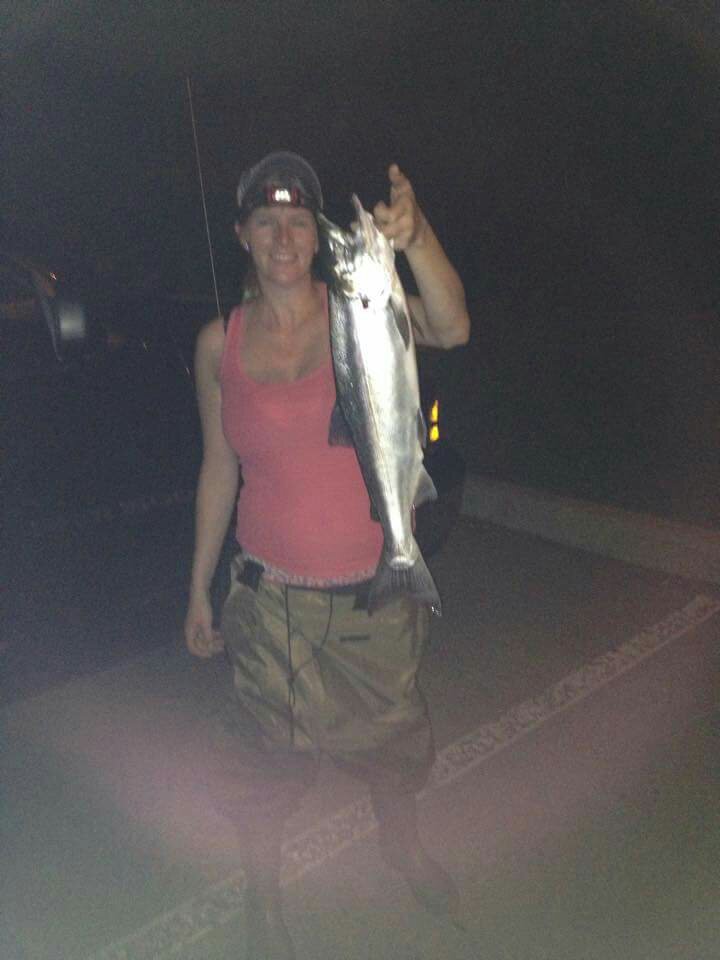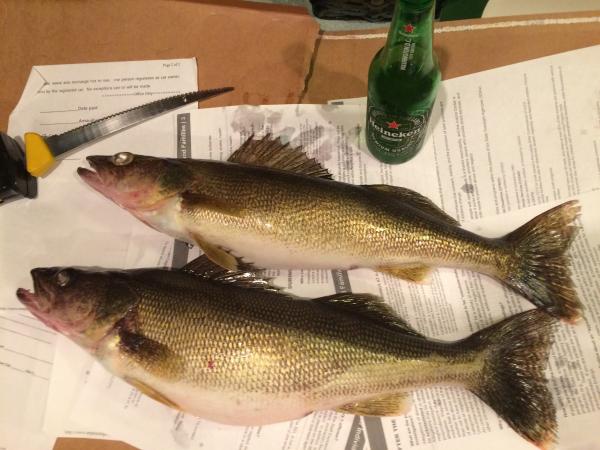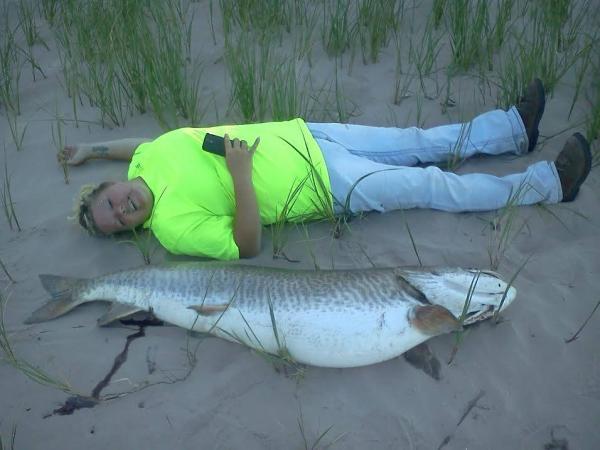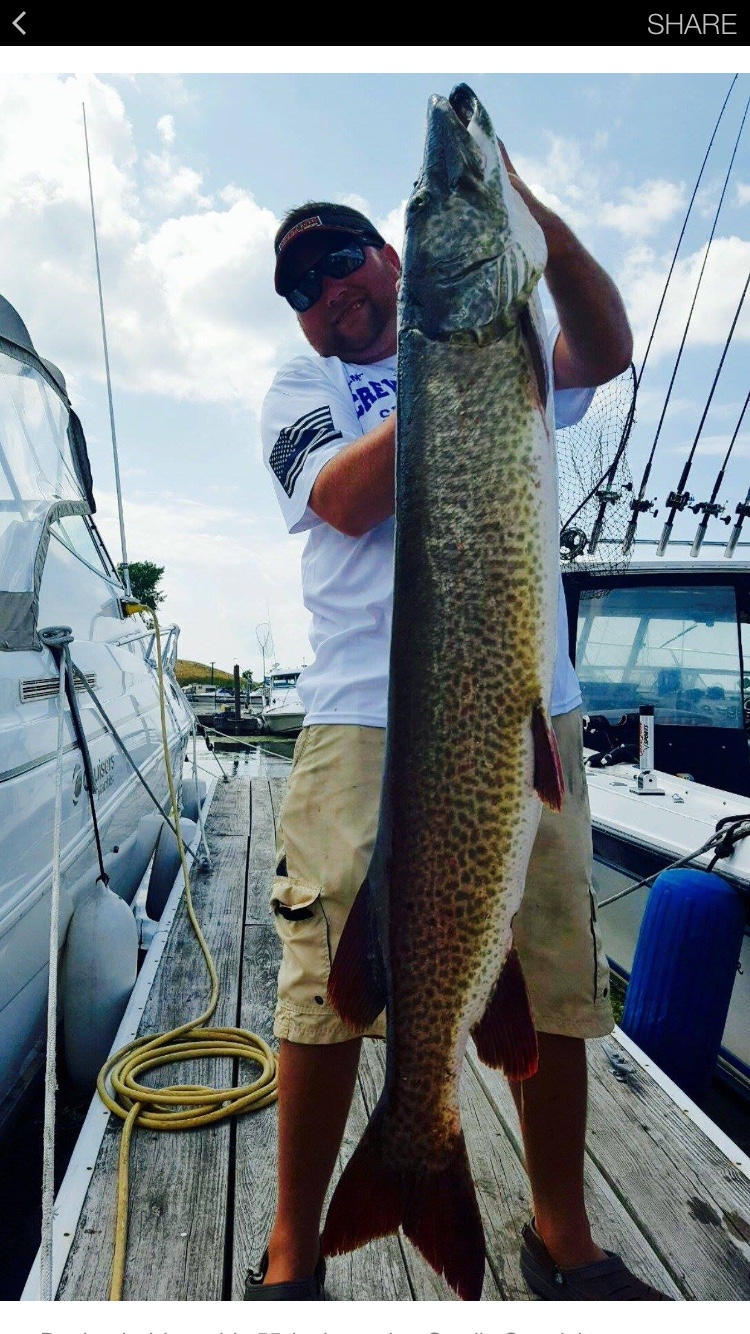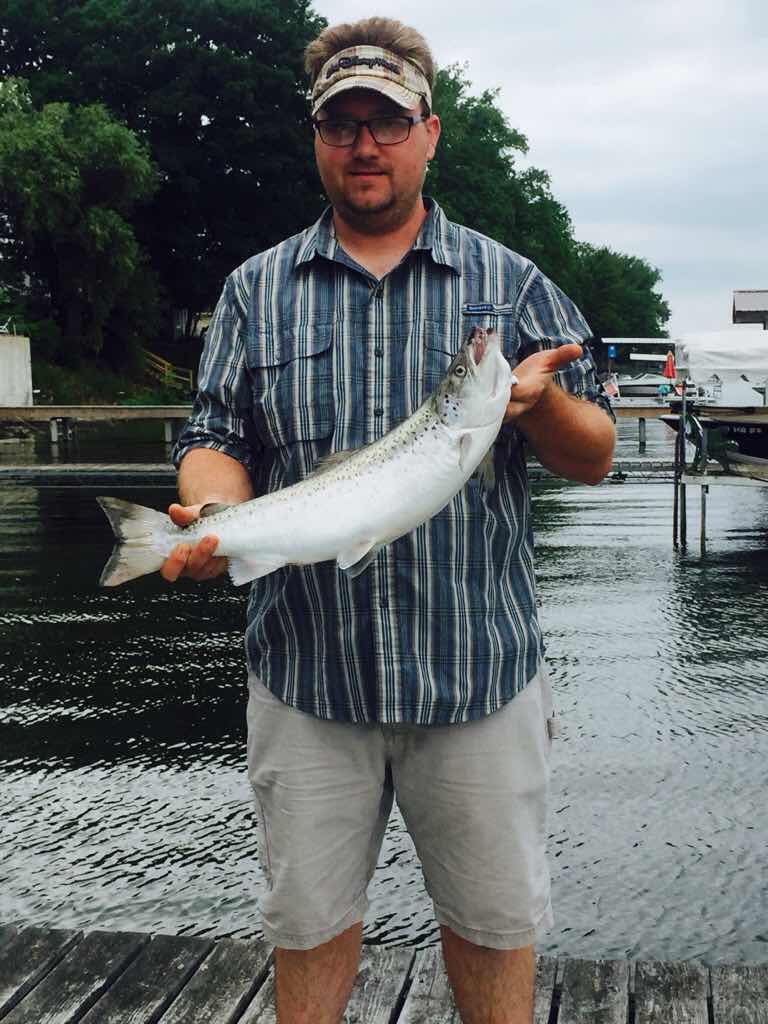-
Posts
1,067 -
Joined
-
Last visited
Content Type
Profiles
Forums
Events
Gallery
Store
Everything posted by muskiedreams
-
Do you know FishinNY here on LOU?
-
Maybe you shouldn't have given so much info. Your local cops might be reading this.
-

Eric Clapton Lands 28lb Salmon in Iceland on Fly Rod
muskiedreams replied to muskiedreams's topic in Open Lake Discussion
Just found out how the double post happens. -

Waneta Lake- Mark Troy Tournament Date?
muskiedreams replied to Dan Morse's topic in Musky, Tiger Musky & Pike (ESOX)
This is correct. We are concerned about the water level and crossing our fingers that it goes up. I am not sure if there might have been a recent rise. If it is too low to navigate the canal, it could cause cancellations. -
-

55inch musky caught trolling for salmon
muskiedreams replied to salmonite's topic in Musky, Tiger Musky & Pike (ESOX)
Probably would not have survived if it was released. No reason to badmouth the guy. -
Do not lubricate carbon drag washers. Carbon is self lubricating. You must be careful not to allow any oil or grease to get on them or you will have a major loss of drag power. If you get lubricant on them, you should be able to rinse it off of the carbon disks with brake cleaner, but use it sparingly. Rinse them with the spray and then pat them dry with a clean rag or paper towel. Don't wipe! Then let them air dry a few minuets. Then clean metal disks with brake clean on a clean rag or paper towel. You also must make sure that you don't mix up the assembly order. Line them up on the table in the order of assembly.
-
Very interesting. There is also a lot of studies being done throughout the Great Lakes on a variety of species using acoustic telemetry. This is where there is a transmitter surgically implanted into the fish and it emits a sonic ping with ID info every 3 min. I believe the battery in a transmitter lasts about 3 years. The pings are picked up by receivers that are placed in strategic locations. Each group that is conducting a study has deployed receivers in locations specifically important to that study. The receivers have to be retrieved on a yearly basis to download the data from them. In Lake Erie it is being used to track walleye, trout, sturgeon and several other species. There are receivers throughout the lake, the Upper Niagara River and the Welland Canal. Each project group takes care of their receivers but the receivers will also record data from any transmitter that passes by. Receivers placed for walleye studies will also record data from a transmitter in a sturgeon and so on. After the data is retrieved by the group doing the study, any data from other tags is forwarded to the appropriate study group. So they all complement each other through the network of receivers. There are also systems in Lake Ontario and the St Lawrence River. I think it is being done in other Great Lakes as well as for saltwater studies. In lake Erie, there is a reward (I think it is $100) for returning transmitters found in caught walleye. I think there is an external ID tag as well. There may be similar rewards for transmitters from other species but I am sure they would prefer the fish is released unharmed (if possible) to continue the study and that they are informed of the release. The Niagara Musky Association is hoping to start a study in the Buffalo Harbor for Muskies. They are awaiting grant approval. Since most likely the transmitters will be installed in fish that are below the 54" legal size limit, I don't know if they will offer a reward, but I am sure they will want to retrieve any tag from a fish that may turn up dead and would also like to be informed of any catch and release.
-
-
-

Found Lake Ontario Muskie
muskiedreams replied to mhtrapper's topic in Musky, Tiger Musky & Pike (ESOX)
-

Found Lake Ontario Muskie
muskiedreams replied to mhtrapper's topic in Musky, Tiger Musky & Pike (ESOX)
There is a twin to this topic in the walleye forum. Dr. Farrell of the Thousand Island Biological Research Station would like to have the opportunity to examine this fish if possible. So if anyone has any info that can help him toward that possibility please respond here or better yet you can contact him at this address. [email protected] -
-
-
I was referring to an electric trolling motor.
-
Obviously, these regulations are difficult to enforce and there may be those who want to violate them in order to make a buck without regard, concern and/or understanding for any consequences to our fisheries. There are sound reasons considered by professionals who made recommendations to our State Legislators to enact these regulations. It is the duty of all of us to follow them in order to help preserve the fisheries that we love. Some of you may not agree with these regulations but if you look at the reasons, I think it makes a lot of sense.
-
You are talking about bait that is caught in the Hudson and allowed to be sold, used and transported within the Hudson Valley Corridor. It cannot be transported or sold outside that corridor. That is not the same as certified bait which is certified to be free of a list of diseases based on lab tests.
-
Are you in New Jersey? We are just talking about what is done in New York. Please clarify if you are in NJ. They may not be as strictly regulated there. Also it may be different along the Atlantic shore.
-
Familiar Bite is frozen (not live) and reportedly tested and certified to be free of the approx 6 diseases NY requires bait be tested for. I didn't see anything about the origin and or any process used to insure no disease but there must be an acceptable process. It would be interesting to know but maybe it is a trade secret. Since they are certified, it would be legal to transport them and can probably be used anywhere in the state, including lakes that prohibit the use of live alewives. Live alewives are different. First of all they are only allowed to be used for bait in a certain list of lakes in the state (see regulations). Second, they would have to be certified (by the required method of certification) to be free of all the specific diseases as required by the state for live bait. Bait retailers must give a receipt to the purchaser. If the bait is certified, it must be stated on the receipt. These baitfish can be transported over land for ten days. After that they are considered uncertified. Alewives caught in any of the lakes on the list where their use is allowed, can only be used on the lake of origin and cannot be transported from that lake (with the exception of the transportation corridors around Lakes Ontario and Erie and a section of the Hudson River). A bait retailer on one of those lakes is allowed to net and sell them for use on the lake. The receipt must give the lake of origin and it must have a warning that it is illegal to transport that bait over land by motor vehicle (except in the corridors mentioned above). I would be interested to know if the DEC has condoned any whole lake certification. If not, the dealer would have to have a certification method and/or procedure that is accepted by the state for each batch netted from the lake if they want to sell it as certified.
-
I would be curious to know where the certified alewives are from. If they are being raised in a pond or if somehow, each batch netted from the lake is certified. It seems like it would be expensive the certify every batch netted from the lake and there may be a delay in getting the lab results. I don't know if the whole lake could be certified to satisfy the requirement. If they are raised in a pond, it would only have to be certified once per year.
-
I like to go by what is defined in the regulation guide. That is what I have used to explain here what the regulations are. According to the rules, alewives are not allowed to be transported from the lake by anyone via motorized land transportation. Technically you can't even bring them home from the bait shop on the lake and then bring them back to the lake to fish with the next day. It sounds a little crazy but that is how it is written and intended. They are very serious about it because of possible huge negative impacts it can cause. A bait shop can have a license to net them in Cayuga Lake but they can only sell them at and to be used in Cayuga Lake and its tribs to the first barrier. The seller is required to provide a receipt that names the water body in which the uncertified baitfish can be used, and includes a warning to the purchaser that the baitfish may not be transported by car or other motorized vehicle.This is because they are uncertified baitfish. Certified baitfish are baitfish that have been certified through specific laboratory testing to be free of a list of diseases including VHS. It is similar to certifying gamefish for stocking in NY state waters. Certified baitfish can be transported and used in most bodies of water throughout the state. I would think only pond raised baitfish would be practical to certify. I have never heard of anyone raising alewives in ponds. Too hard to maintain the right environment. Like I said, it is best to read the regulations yourself. Here is a link to the baitfish regulation page. http://www.dec.ny.gov/outdoor/47282.html Here is a link to a publication from the DEC that explains the rules in more detail and also explains the reasons for the rules. Look at page 5 through 7 but you might want to read more. http://www.dec.ny.gov/docs/fish_marine_pdf/baitfishofny.pdf
-
Do you have an electric and a battery for it? If you don't and you add it, that could knock off a few mph. Or me in the bow is sure to knock off a few
-
Your friends could be contributing to the spread of an invasive species and possibly the spread of diseases. According to the regulations, if your friends are transporting alewives around the state, they are breaking the law. Alewives cannot be certified as bait in New York State because they are an invasive species and only allowed to be used in the waters they are taken from, PERIOD. Maybe that lady sells other bait that is certified. Or maybe she is selling bait illegally. Also if you read the regulations, in New York State, you can only use alewives in the body of water they are caught in and the only places they can be transported by car is along narrow corridors along Lakes Ontario and Erie and along a narrow corridor along a certain part of the Hudson River. Transporting them anywhere else within the state is illegal even from one finger lake to another and technically, even from one end of a finger lake to the other end by car (by boat is ok). So technically, on the finger lakes, or anyplace in the state other than the transportation corridors, they can only be sold or purchased, on the lake shore (or trib. to first barrier) to be taken directly into the lake they were caught in to be used for bait. I have a friend who has ponds and used to sell fathead minnows to fishermen years ago but now, since he would need to certify his ponds every year, for a fee, it is not worth it to him anymore. It is only worth it now to bait farms who sell mass quantities to bait shops. and hatcheries.
-
I believe they are hard to keep alive, are only sold on and for the waters they are caught from. Since they are not certified bait, they cannot be used on or transported to any other body of water other than the body of water they were caught in. Especially with alewives because they are an invasive species. They are not in all lakes in the state and they don't want them to be introduced into lakes that don't have them. See the rules on baitfish in the regulation guide. Many years ago (more than 20) they used to sell them at the marina at the south end of Canandaigua Lake. I don't know if they still do. They used to pump water from the lake to keep them alive. Also, many anglers who used them were night fisherman and they would just shine a spotlight from the boat into the water that would bring them to the surface and they could just net them.


